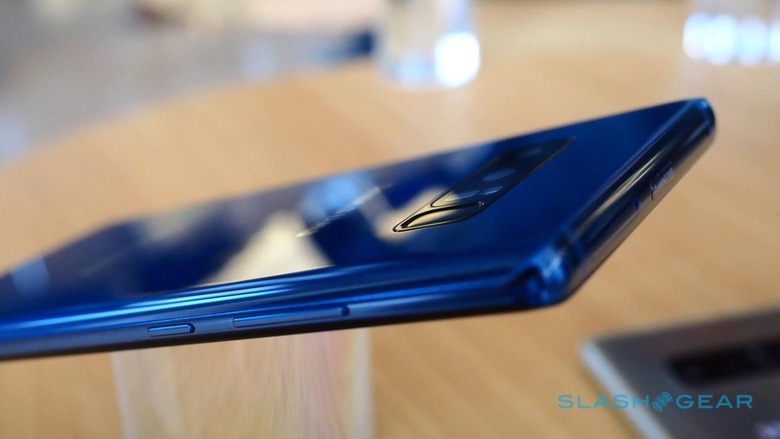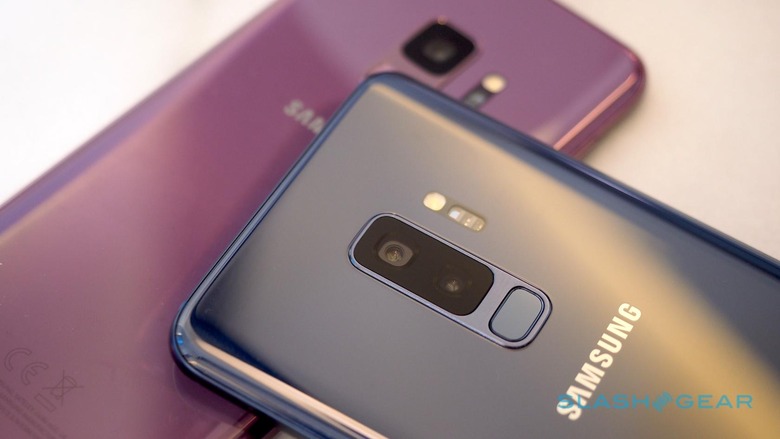Note 9 In-Display Fingerprint Decision Is Down To The Wire
The will-they won't-they of the Galaxy Note 9's in-display fingerprint reader saga continues, with a new report claiming Samsung in fact does intend to bake biometrics into its new phablet's screen. The technology-du-jour has been a hotly discussed feature in smartphone circles for some time now, as phone-makers attempt to accommodate various sensors while also slimming down screen bezels.
The Galaxy S9 and S9+ launch, of course, came and went without in-screen biometrics being added to the flagship phone. Meanwhile, chatter of whether it would be a headline feature of the Galaxy Note 9, expected to make its debut later this year, has swung between the extremes.
Initially, Samsung was said to be working on the technology for the Note 9. Then came the rumors that getting the system to work was simply too challenging for a phone in 2018. In the meantime, Vivo surprised everybody with the first implementation – in concept form, at least – of a Synaptics in-screen fingerprint sensor. The production version of that device is expected to launch later this year.
According to a new report from The Korea Herald, Samsung and its screen division, Samsung Display, haven't given up. Indeed sources claim that they're still potentially on track for having such a system ready in time for the Note 9's anticipated release in late April 2018. Their motivation isn't just a competitive spirit to be first, either.

"Samsung Display has prepared three or four solutions for Samsung Electronics to embed the fingerprint sensor inside of the main display, and both are seriously considering one of the solutions," a source told the Korean paper. Indeed, according to that insider, Samsung's desire to use in-display fingerprint biometrics has derailed its usual timeline for finalizing the smartphone's design.
That, apparently, now won't be complete until later this month. In previous years, the decision had been made roughly five months ahead of the phone's intended launch. "The delay in deciding on the final concept for the Note 9 is due to the work in adopting the in-display fingerprint sensor," the source said
The challenge Samsung faces – and which embedding the sensor into the screen could alleviate – is battery capacity. Currently, the phone-maker puts its fingerprint sensors on the rear of its phones; in the case of the Galaxy S9 and S9+, it also moved them to a position underneath the camera. That came after owner feedback, Samsung said at the devices' launch, expressing a dislike of the old location alongside the lens as on the Galaxy S8.

Problem is, the new layout eats into what internal space Samsung could use for a larger battery. The Galaxy S9 and S9+ stuck with the capacity of their predecessors, but the Note series has always been positioned as a mobile powerhouse and needs a sizable battery in keeping with that reputation. The current Note 8 has a 3,300 mAh battery, actually smaller than the 3,500 mAh in the Galaxy S9+.
If Samsung wants to increase that in the Note 9, and without dramatically enlarging the phone in the process, it will need to figure out a way to ergonomically place the fingerprint sensor: either on the back, or in the screen. Last month, execs at the company insisted that Samsung would not rush into in-screen biometrics, hedging their bets that it would be adopted only when the market was ready for the technology. That might also be the necessary get-out clause should the implementations Samsung Display has developed not yet be ready for mass production this year.
